The harvest
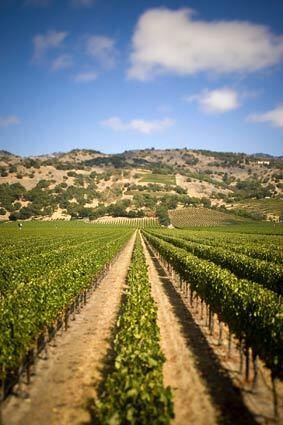
Harvest has begun in Napa Valley. After a heat wave that threatened to turn the grapes into raisins, the weather cooled and the buzz is that the vintage will be stellar. But vintners have other worries -- namely, immigration issues that are affecting vineyard workers. A few vintners are experimenting with mechanical harvesters as a fallback in case there’s a shortage of workers in coming years. (Dave Getzschman / For The Times)
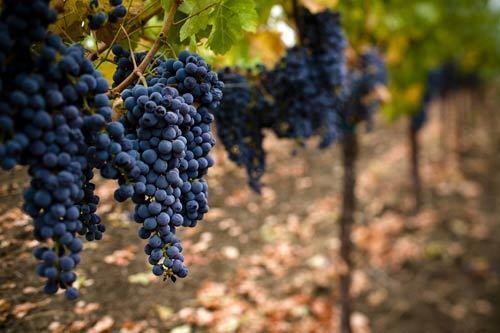
Cabernet grapes at Barberis vineyard, which dry-farms fruit in Calistoga for Chateau Montelena winery. Montelena experimented with mechanical harvesting in 1985, but its winemaker didn’t like what it did to the vineyards. This year the winery harvested one Merlot vineyard with a new type of harvester and had better results. (Dave Getzschman / For The Times)
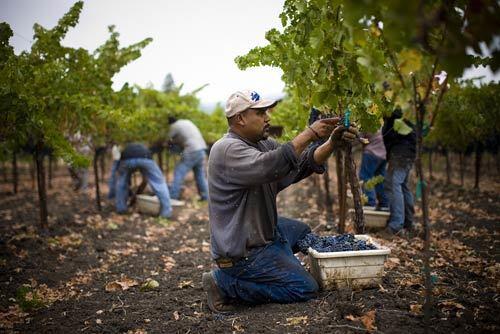
Vineyard worker Juan Perez harvests Cabernet grapes at Barberis vineyard. Entry-level seasonal workers in Napa are paid $10 per hour. (Dave Getzschman / For The Times)
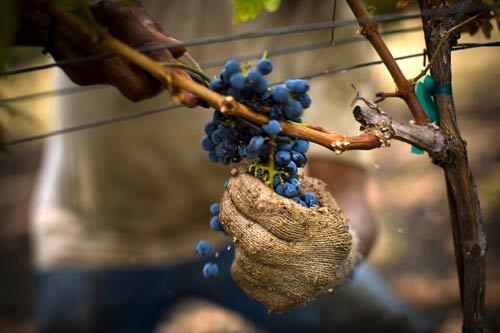
Vineyard workers use clippers or small, curved knives to cut the grape bunches off the vine. They’re careful not to damage the grapes. (Dave Getzschman / For The Times)
Advertisement
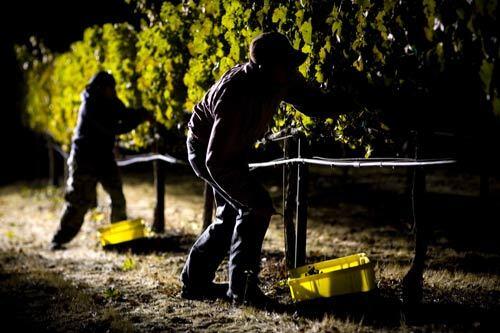
Edgar Puleado, left, and Salvador Servin harvest Cabernet grapes at Cliff Lede’s Poetry vineyard in Napa’s Stags Leap District. Winemaker Michelle Edwards says the winery will be one of the last to go to mechanical harvesting because it runs counter to everything the winery has been doing to improve quality. (Dave Getzschman / For The Times)
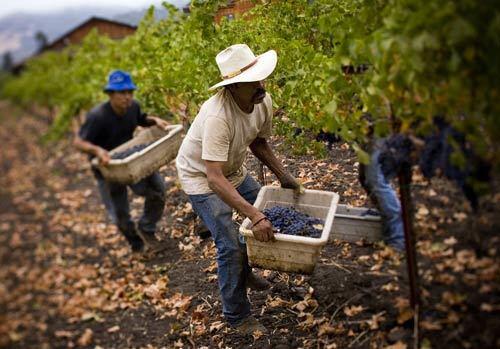
Jose Perez, center, and Antonio Monzia harvest ripe Cabernet grapes at Barberis vineyard in Calistoga early in the morning, before rising temperatures heat up the grapes. During the recent heat wave, many crews worked two weeks straight from midnight to noon. (Dave Getzschman / For The Times)
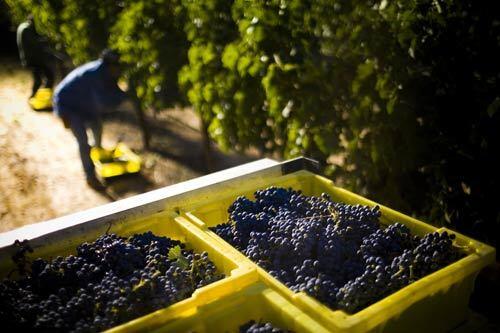
Vineyard workers place harvested grapes in yellow bins, where they await transport to Cliff Lede winery in Stags Leap District. (Dave Getzschman / For The Times)
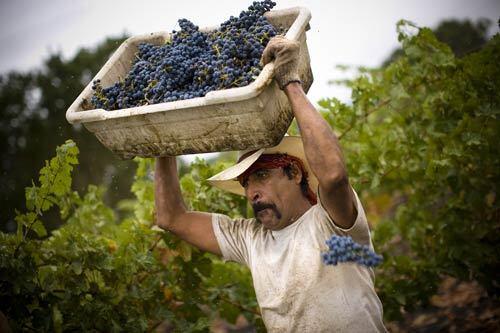
Jose Perez carries grapes to a half-ton bin at Barberis vineyard in Calistoga. (Dave Getzschman / For The Times)
Advertisement
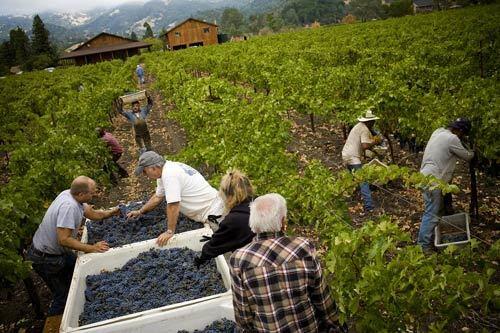
Barberis family members inspect Cabernet grapes at their vineyard, as workers harvest. Bobby Barberis owns the 35-acre vineyard, which has an exclusive contract with Chateau Montelena. (Dave Getzschman / For The Times)
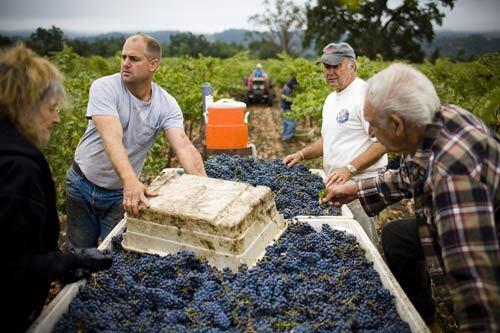
Buddy Barberis, son of vineyard owner Bobby Barberis, deposits harvested Cabernet grapes into a bin destined for Chateau Montelena winery. (Dave Getzschman / For The Times)
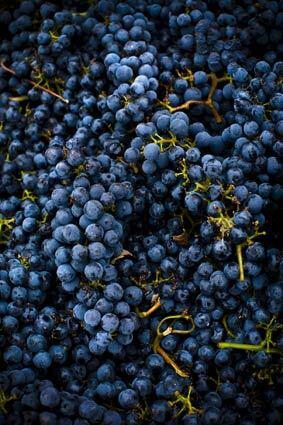
Cabernet grapes grown for Chateau Montelena. (Dave Getzschman / For The Times)
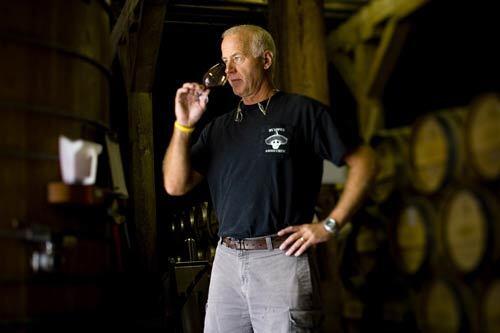
Chateau Montelena winemaker Bo Barrett assesses free-run juice pressed from just-harvested Merlot grapes. He anticipates a stellar vintage, though until the harvest is finished, he can’t be sure. Barrett says he’s glad to have mechanical harvesting as an option. “If the government ever really cracked down, if they make us the cops, we’ll mechanize because we have to,” he says. (Dave Getzschman / For The Times)
Advertisement
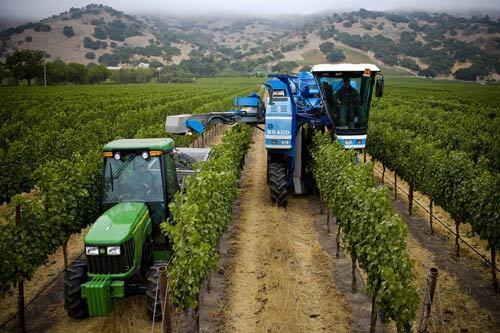
At a vineyard Clos Du Val leases in Stags Leap District, a mechanical harvester shakes grapes from the vine, then conveys them to a bin behind an adjacent tractor. Mechanical harvesting works well for thick-skinned Cabernet Sauvignon and Merlot grapes, says John Clews of Clos Du Val. Clews sees a quality advantage in mechanical harvesting because the grapes, de-stemmed by the machine in the field, can be processed more quickly in the winery. Mechanical harvesting costs $150 per acre, while hand harvesting costs $600 or more per acre. (Dave Getzschman / For The Times)







